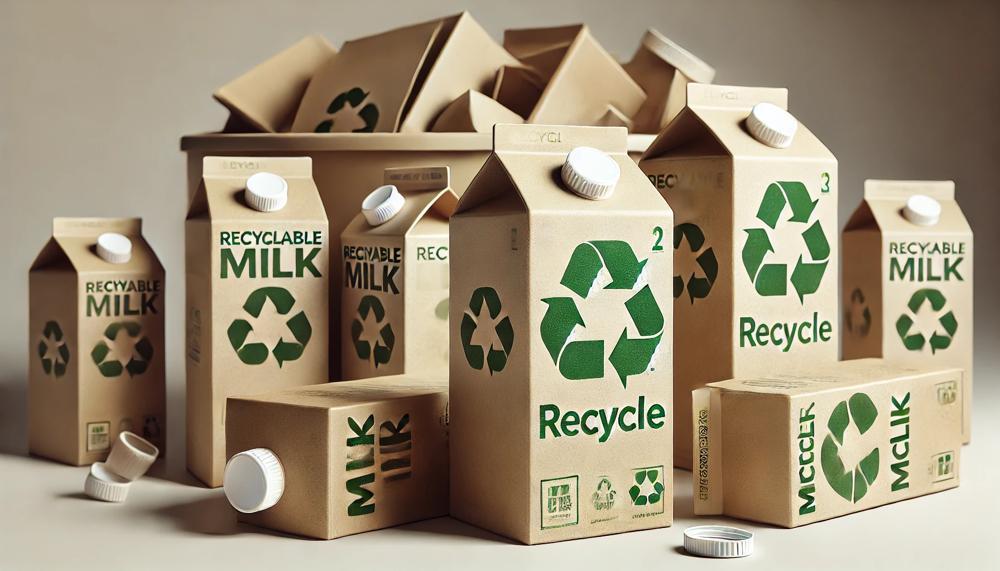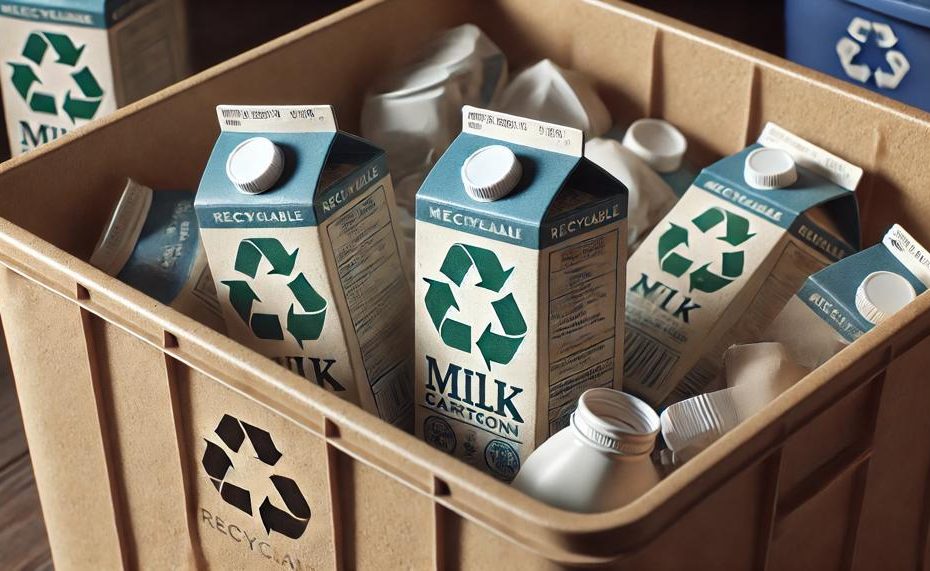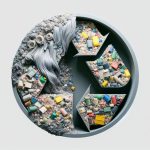The answer is a resounding yes—but with some caveats. With advancements in recycling technology, an impressive 62% of U.S. communities now have the capability to recycle milk cartons. These cartons, primarily made of paperboard with a plastic lining, pose unique challenges in the recycling process.
However, with the right facilities and practices, they can be transformed into new, useful materials. Before you toss your empty carton in the recycling bin, it’s crucial to check with your local recycling program to ensure they accept these items.
Recycling milk cartons not only helps reduce waste but also contributes significantly to lowering greenhouse gas emissions. Every recycled carton is a step towards a more sustainable future. Here are some key takeaways to keep in mind:
- Check Local Recycling Programs: Confirm if your local facility accepts milk cartons.
- Preparation is Key: Rinse and empty cartons thoroughly before recycling.
- Proper Disposal: Remove plastic caps and flatten cartons to save space.
- Special Facilities: Use resources like the Green Directory from GreenCitizen to find specific recycling centers.
- Environmental Impact: Recycling milk cartons helps reduce waste and greenhouse gas emissions.
Stay tuned to learn more about how you can make a difference with your recycling habits.
Contents
Can You Recycle Milk Cartons?
Yes, milk cartons can be recycled. The process and the resulting products, however, depend on your local recycling facilities and their capabilities. Here’s an overview of how milk cartons are recycled and what they can be transformed into:
Recycling Process for Milk Cartons
- Collection: Milk cartons are collected from homes and businesses through curbside recycling programs or drop-off locations.
- Sorting: At the recycling facility, cartons are sorted from other recyclables. This step is crucial to ensure they go through the correct recycling process.
- Pulping: The sorted cartons are then sent to a pulping facility where they are mixed with water in a large blender-like machine. This process separates the paper fibres from the plastic and aluminium layers.
- Separation: The paper pulp is then cleaned and screened to remove any remaining contaminants. The plastic and aluminium residues are separated for further processing.
- Processing: The cleaned paper fibres are used to make new paper products, while the separated plastic and aluminium can be used to create composite materials or energy recovery.
Products Made from Recycled Milk Cartons
| Recycled Material | New Products | Details |
| Paper Fibres | Paper Products | Recycled paper fibres from milk cartons are used to produce items like tissue paper, paper towels, office paper, and cardboard. |
| Plastic and Aluminium | Composite Materials | The plastic and aluminium residues can be used to manufacture durable materials for products like roofing tiles, floor panels, and outdoor furniture. |
| Energy Recovery | Fuel for Cement Kilns | In some cases, the plastic and aluminium materials are used as an alternative fuel in cement kilns, reducing the need for fossil fuels. |
Tips for Recycling Milk Cartons
- Check Local Guidelines: Always verify with your local recycling program if they accept milk cartons.
- Preparation: Empty, rinse, and flatten cartons to save space and make them easier to process.
- Remove Caps: Remove any plastic caps or spouts before recycling.
- Use Resources: Utilize resources like the Green Directory from GreenCitizen to find nearby recycling centers that accept milk cartons.
Recycling milk cartons is a straightforward yet impactful way to reduce waste and support environmental sustainability.
What Are Milk Cartons Made Of?
Milk cartons are typically composed of multiple layers of different materials, each serving a specific purpose. Here’s a detailed breakdown of these materials and the reasons behind their selection:
| Material | Purpose | Explanation |
| Paperboard | Structural Support | Paperboard is the primary material used in milk cartons. It provides the necessary strength and rigidity to the carton, making it sturdy enough to hold the liquid contents without collapsing. Typically, this is made from wood pulp, a renewable resource, which contributes to the carton’s overall sustainability. |
| Plastic Resins | Water Resistance and Durability | Plastic resins, often polyethylene, coat the paperboard to create a moisture barrier. This prevents the paperboard from absorbing liquid and becoming soggy, ensuring the carton remains intact and leak-proof. Polyethylene is also chosen for its flexibility and toughness, making the carton more durable during transport and handling. |
| Oxygenated Compounds | Preservation and Strengthening | Oxygenated compounds are incorporated to enhance the strength of the carton and preserve the quality of the milk. These compounds help to protect the milk from external contaminants and oxidation, which can spoil the contents. By maintaining an airtight seal, these compounds ensure that the milk stays fresh for longer periods. |
These materials are meticulously selected to ensure that milk cartons are both functional and safe for storing milk. The combination of paperboard and plastic resins provides a balance of structural integrity and moisture resistance, while oxygenated compounds add an extra layer of protection against spoilage.
The Milk Carton Recycling Process
The Milk Carton Recycling Process involves several meticulous steps to ensure environmental sustainability and resource conservation. Here’s a detailed breakdown:
Check Recyclability
Verify if the milk carton is recyclable by checking the packaging for recycling symbols. Most cartons, made of paperboard and plastic, are designed to be recycled.
Rinse and Flatten
Rinse out the carton thoroughly to remove any residual milk or liquid. This prevents contamination in the recycling stream. Flattening the carton helps save space in the recycling bin.
Remove Caps
Remove and discard any plastic caps or lids separately, as they often need to be recycled differently from the carton itself.
Separate Waste
Ensure the milk carton is clean and dry before placing it in the recycling bin. It should be separated from non-recyclable waste to avoid contamination.
Curbside Collection or Drop-off
Place the carton in your paper recycling container for curbside collection. If curbside recycling is unavailable, locate a nearby drop-off facility.
Recycling Facility Processing
At the recycling facility, milk cartons undergo a process called hydropulping. This involves mixing the cartons with water to separate the paper fibers from the plastic and aluminium layers.
The paper pulp is then used to create new paper products, while the plastic and aluminium can be further processed into other products.
Follow Local Guidelines
Always adhere to specific instructions from your local recycling company, as some facilities may have different requirements for recycling milk cartons.
Reduce and Reuse
Alongside recycling, practice reducing and reusing milk cartons to minimize waste. For example, repurpose clean cartons for storage or craft projects before deciding to recycle them.
By following these steps, you contribute to a more sustainable environment and help in the efficient recycling of milk cartons.
Challenges in Recycling Milk Cartons
The main hurdles in recycling milk cartons stem from their composite materials and contamination issues. Here’s a detailed look at the primary challenges and potential solutions:
| Challenge | Solution |
| Composite Material Separation | Utilize advanced recycling technologies and check local recycling capabilities. |
| Plastic Lining Removal | Ensure local facilities can process the materials and rinse cartons before recycling. |
| Contamination | Rinse and dry cartons thoroughly to prevent contamination. |
| Availability of Facilities | Use directories like GreenCitizen to find accepting centers. |
| Public Awareness | Implement educational programs to inform the public on proper recycling methods. |
How to Properly Recycle Your Milk Cartons
Recycling milk cartons correctly ensures they are efficiently processed and reused, helping to preserve resources and reduce environmental impact. Follow these steps to recycle your milk cartons properly:
Check Local Guidelines
Verify with your local recycling program if they accept milk cartons. Not all facilities can process the plastic-paper composite.
Empty and Rinse
Thoroughly empty the carton of any remaining milk and rinse it out. This prevents contamination in the recycling stream.
Remove Caps and Spouts
Remove any plastic caps or spouts. These are typically recycled separately.
Flatten the Carton
Crush the carton to save space. This makes storage and transportation more efficient.
Cut into Smaller Pieces (if required)
Some recycling programs may ask you to cut the cartons into smaller pieces. Check local requirements.
Place in Recycling Bin
Put the cleaned and flattened carton in your recycling bin, or take it to a designated recycling center if required.
Why It’s Important to Follow These Steps
Properly recycling milk cartons helps in several ways:

- Reduces Waste: Minimizes the volume of waste sent to landfills.
- Conserves Resources: Saves raw materials needed for new products.
- Decreases Emissions: Reduces greenhouse gas emissions from both landfills and the production of new materials.
- Promotes Recycling Efficiency: Clean, sorted materials are easier to process and have a higher value.
Conclusion
Recycling milk cartons is indeed possible, but it comes with a few considerations. An impressive 62% of U.S. communities now support carton recycling thanks to advancements in recycling technology. Milk cartons, made primarily from paperboard and plastic, present unique challenges, but with the right facilities, they can be transformed into valuable materials.
Before recycling, ensure your local program accepts milk cartons. Preparation is key: rinse, empty, and flatten cartons, and remove plastic caps. These steps help streamline the recycling process.
The benefits of recycling milk cartons are significant. Each recycled carton helps reduce waste and lower greenhouse gas emissions, contributing to a more sustainable future. By recycling, you support the creation of new products from paper fibers, like tissue and cardboard, and composite materials from plastic and aluminum residues.
In addition to local recycling programs, resources like GreenCitizen’s Green Directory can help you find specific recycling centers. Embracing these practices can make a notable difference in environmental impact.





